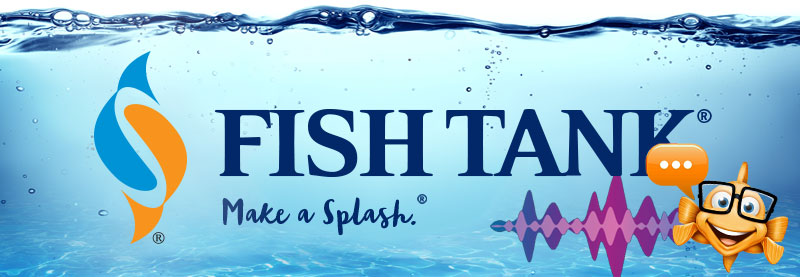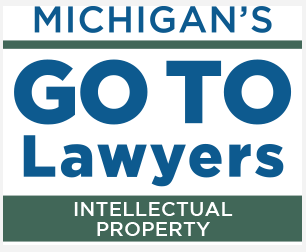Intellectual Property Insights from Fishman Stewart PLLC
Newsletter – Volume 23, Issue 9
Share on Social

Reeling in Patent Protection: Section 102 and 103 Rejections in the USPTO Waters
In the Midwest, open water fishing season is upon us. As with traveling on the Great Lakes, navigating the choppy waters of the United States Patent and Trademark Office (USPTO) can be a daunting endeavor for any applicant angling to protect their innovations. Like a master angler, one must use the right bait to bring in a successful patent. Patent claims are the essential bait in a patent practitioner’s tackle box. Patent claims, found at the end of a patent and often compared to a property deed, define the scope of legal protection for the invention. Like a fisherman selecting the perfect lure, a patent practitioner hunts for just the right words to craft their patent claims to cover the unique features of the invention.
You or your inventors may have come up with a new lure that darts around in the water. The patent practitioner will work to find just the right words and turn of phrases to succinctly describe the invention in the patent claims.
When a USPTO patent examiner gets around to reviewing your claims, it’s their job to determine whether or not the claims should be rejected. The most common rejections are cast out as anticipation and obviousness rejections under Sections 102 and 103, respectively, of the United States Code (U.S.C.) Title 35.
Hook, Line, and Sinker: Section 102 Anticipation Rejections
In the deep waters of patent law, an “anticipation” rejection under Section 102 is the Muskellunge of patent rejections –swallowing your invention hook, line, and sinker.
Anticipation rejections occur when the USPTO patent examiner roots around in their tackle box and finds a single piece of “prior art” that the examiner feels “reads” on your invention as described in the claims. Generally, “prior art” includes documents that are relevant to the claimed subject matter of the patent application, and that were known prior to the effective filing date of the patent application. These can include, for example, patents, patent applications, other publications, and even documents associated with public use or sale of the invention. In other words, examiners are looking for a single piece of prior art that shows your claimed invention is not novel. If found, the prior art is presented to the inventor along with an explanation as to why the examiner feels you are trying to reel in a fish that has already been caught.
In response, the patent practitioner may argue that the prior art reference does not actually disclose the invention as described in the claim(s). Alternatively, it may be possible to change the claim language to better differentiate the invention from the prior art. Indeed, sometimes it is as simple as a minor change in language. Remember, the invention is defined by the claims, not by the beautiful pictures and whatnot in the patent.
Let us say it is 1896 and you came up with a special fishing hook. You file a patent application with the following claim language: An apparatus having a shank, a line coupled to a top portion of the shank, and two hooks protruding from a bottom portion of the shank.
In response, an examiner rejects your claim under section 102 alleging that this anchor anticipates your claim. Sure, it is an anchor, but it is also pretty hard to argue that it does not read on your claim language. As such, maybe now would be a good time to amend the claim language to change “two hooks” to “two fishing hooks.”
The School of Fish: Section 103 Obviousness Rejections
Another hurdle you may face during your day fishing for patent protection is the cunning Section 103 rejection, also known as an “obviousness” rejection. This type of rejection, which often relies on multiple pieces of prior art, is more akin to a school of bait fish nibbling away at your invention until there is nothing left.
The obviousness rejection is often a more challenging fish to fry, as it relies on the examiner’s subjective determination of whether the invention would have been obvious to a person of ordinary skill in the art (POSITA) at the time it was conceived. Often, an examiner makes a stew of multiple pieces of prior art, and then presents an argument as to why they feel your invention is obvious in light of the cited art.
The Section 103 rejection is a wide net that is easy to get snagged in. To get out of this snag, the patent practitioner may choose to argue that the fish stew is no good. That is, arguments may be presented to convince the examiner that the combination of prior art references would not have led a POSITA to the claimed invention. Alternatively, it may be possible to change the claim language to better highlight the non-obvious features of the invention.
Successfully arguing against an obviousness rejection can feel like spending the day reeling in a big marlin – time consuming and tiring, but gratifying. Unsuccessful? Well that feels more like spending the day reeling in a big marlin, only for it to pull you and your gear into the sea when it gets to the boat.
Navigating the USPTO’s waters and avoiding the Section 102 and 103 predators requires a deep understanding of patent law and a keen sense of strategy so you do not get stuck in the weeds. Much like the fisherman who knows when to cast their line and when to change their bait, a patent practitioner must be prepared to adapt and respond to the challenges that may arise in their pursuit of patent protection.
Patent prosecution and angling: sometimes the skies are clear and it’s smooth sailing, while other times you end up cold, wet, hungry, and feeling crappie. Pardon the pun.
Mark Lambrecht is Of Counsel to Fishman Stewart. Mark is a registered patent attorney and practices various aspects of intellectual property matters including domestic and foreign patent prosecution, opinions, and design-around. He has an extensive background in the electrical, electro-mechanical, electro-magnetic, and software/hardware arts.
Related Content from Fishman Stewart
Car enthusiasts are buzzing about Alfa Romeo's latest SUV which is also its first EV (plus a hybrid option). Initially branded as “Milano,” the name was changed to "Junior" after it was announced that the car would be produced in Poland.
The online word game Wordle was created in 2021 by Josh Wardle and quickly rose in popularity. Players receive a new puzzle daily with six chances to correctly guess a five-letter word of the day with limited clues.
In a recent decision, the U.S. Court of Appeal for the Eighth Circuit affirmed a jury verdict holding that the use of the "Success Kid" meme by a congressman's reelection campaign for fundraising purposes did not qualify as fair use.
In February 2024, proposed legislation was introduced in US House of Representatives which would extend copyright protection to golf courses. The bill is titled “Bolstering Intellectual Rights against Digital Infringement Enhancement Act” or the “BIRDIE Act”.
OpenAI recently held a live demonstration of a new ChatGPT version that included the use of an AI personal assistant voice dubbed “Sky.” Many observers compared Sky to Scarlett Johansson’s voice in the 2013 Spike Jonze romantic sci-fi film “Her,” which centers on a man who falls in love with the female voice of his computer’s operating system.
June is Pride Month, which honors the 1969 Stonewall Uprising in Manhattan and recognizes the impact that lesbian, gay, bisexual, and transgender (LGBTQ+) individuals have had on history locally, nationally, and internationally. The United States Patent and Trademark Office flies the Pride Flag and promotes the Pride community’s contributions with programming offered annually.
First-time inventions have led inventors to great successes throughout history, sometimes immediately, sometimes after several more attempts at more useful inventions. In the U.S., two very famous inventors with contrasting first-time experiences are Thomas Edison and Alexander Graham Bell.
June is Pride Month. This year we are celebrating with some IP tips for drag performers! Drag performers can protect their intellectual property by registering the copyrights in their original works of music, choreography, and comedy sketches.
Bands often start out as creative endeavors among friends, and bands may not prove lucrative for many years, if at all. Until bands break up, thought and planning may not be given to who is the owner of the band names and entitled to use them going forward.
You’re rarely more than a few yards from Finny’s favorite chips, semiconductor chips to be precise. But what exactly is a semiconductor chip?
IDENTIFYING, SECURING AND ADVANCING CREATIVITY®















